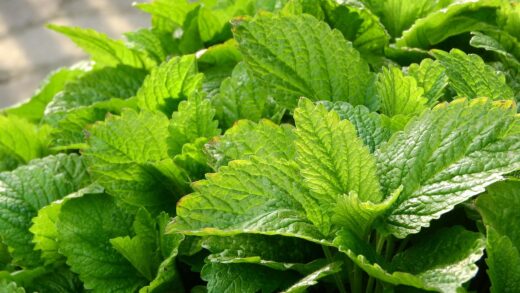The overwintering of amaryllis

Overwintering is an absolutely essential process for the long-term health and repeated flowering of an amaryllis plant. This period of dormancy is not simply a time of rest; it is a critical phase in the plant’s life cycle during which important physiological changes occur that are necessary to trigger the development of new flower buds. Many novice growers make the mistake of discarding their amaryllis after its first bloom, unaware that with a proper overwintering strategy, the bulb can be coaxed into producing spectacular floral displays for many years. Mastering the technique of forcing dormancy is the key to transforming your amaryllis from a one-time decoration into a perennial treasure.
The purpose of overwintering is to mimic the natural environmental cues that the amaryllis bulb would experience in its native habitat. In the wild, these plants grow in regions that have distinct wet and dry seasons. The period of active growth and flowering corresponds to the rainy season, while the dry season triggers a period of dormancy. By manipulating water, light, and temperature, we can replicate this cycle indoors and signal to the bulb that it is time to rest and prepare for the next growing season. This controlled resting period is what ensures the plant will have the energy and the internal trigger to bloom again.
The overwintering process typically begins in the late summer or early autumn, after the plant has had a full season of vegetative growth following its previous bloom. During the spring and summer, the leaves should have been actively photosynthesizing, storing energy within the bulb. As the days shorten and the light intensity decreases, it is time to start preparing the plant for dormancy. This is not an abrupt process but rather a gradual transition that gently guides the plant into its resting state.
It is important to understand that without this dormant period, an amaryllis will likely not rebloom, or if it does, the flowers will be sparse and weak. The bulb requires this time of rest to consolidate its energy stores and initiate the formation of the embryonic flower buds deep within its core. Simply continuing to water and fertilize the plant year-round will result in a pot of lush green leaves but will fail to provide the necessary conditions to stimulate a new flowering cycle. Therefore, a successful overwintering is the non-negotiable link between one year’s floral display and the next.
Preparing the bulb for dormancy
The preparation for dormancy is a gradual process that should begin approximately eight to ten weeks before you want the plant to start its next growth cycle. In late summer or early autumn, start by gradually reducing the amount of water you provide to the plant. Allow the soil to dry out more completely between waterings than you would during the active growing season. At the same time, you should cease all fertilization. This reduction in water and nutrients is the primary signal to the amaryllis that the season of growth is ending.
More articles on this topic
As you reduce watering, the leaves of the amaryllis will naturally begin to yellow and wither. This is a normal and expected part of the process and should not be a cause for concern. It indicates that the plant is successfully reabsorbing the remaining nutrients and energy from the foliage and transferring them down into the bulb for storage. You should allow the leaves to die back completely on their own. Do not be tempted to cut the green leaves off prematurely, as this will deprive the bulb of a significant amount of energy that is crucial for future flowering.
Once the leaves have completely withered and can be easily pulled away, or once they are entirely brown and dry, you can trim them off about an inch or two above the neck of the bulb. At this point, you should stop watering the plant altogether. The goal is for the soil to become completely dry. This dry period is essential to prevent the bulb from rotting while it is in storage and to ensure it remains in a state of deep dormancy throughout its rest.
After the foliage has been removed and the soil is dry, the final step in preparation is to find a suitable location for the bulb to overwinter. You have the option of leaving the bulb in its pot or carefully removing it, brushing off the excess soil, and storing it bare. Leaving it in the pot is often the simplest and safest method, as it protects the bulb from physical damage and helps to maintain a stable, dry environment. The prepared bulb, whether in its pot or stored bare, is now ready to begin its crucial resting period.
The dormant period
The conditions during the dormant period are critical for successfully triggering a new flowering cycle. The overwintering amaryllis bulb needs to be stored in a location that is cool, dark, and dry. The ideal temperature range for this resting phase is between 10-13°C (50-55°F). Suitable locations can include a cool basement, an unheated garage (as long as it remains above freezing), a cellar, or even a cool closet in your home. It is important that the temperature remains relatively consistent throughout the dormancy.
More articles on this topic
Light is another important factor to control during this period. The location should be dark, as light can signal the bulb to break dormancy prematurely. If you are storing the bulb in its pot, you can simply place it in a dark corner or cover it with a cardboard box. If you have removed the bulb from the soil, it can be placed in a paper bag, a mesh bag, or a cardboard box filled with dry peat moss or vermiculite. This not only keeps it dark but also helps to cushion the bulb and wick away any trace amounts of moisture.
The duration of the dormant period is also a key element for success. The amaryllis bulb requires a minimum of eight to twelve weeks of this cool, dark rest. This chilling period is not just a passive wait; it is an active physiological process within the bulb. During this time, hormonal changes occur that initiate the development of the flower primordia, which are the embryonic structures that will eventually grow into the flower stalk and blooms. Cutting this period short is a common reason for reblooming failure.
Throughout the entire dormant period, it is absolutely essential that the bulb receives no water. The soil should remain completely dry. If you are storing the bulb bare, it should also be kept dry. Check on the bulb periodically, perhaps once a month, to ensure that it is not developing any mold or soft spots, which would indicate excessive humidity. A healthy dormant bulb should remain firm and dry to the touch throughout its long rest.
Waking the bulb after dormancy
After the amaryllis has completed its mandatory eight-to-twelve-week dormant period, it is time to reawaken the bulb and initiate a new season of growth. This process involves reversing the conditions of dormancy by reintroducing warmth, light, and water. If you stored the bulb bare, now is the time to repot it into fresh, well-draining potting soil, following the standard planting procedure of leaving the top third of the bulb exposed. If you left the bulb in its pot, you can either repot it into a larger container with fresh soil or simply scrape off the top few inches of old soil and replace it with a fresh layer.
Once the bulb is potted, move it to a location that is warm and receives bright, indirect sunlight. A temperature of around 21-24°C (70-75°F) is ideal for stimulating new growth. The next step is the most crucial signal to break dormancy: water. Give the soil a thorough and complete soaking, watering until you see it freely draining from the bottom of the pot. This initial, generous drink of water is what alerts the now-rested bulb that the “dry season” is over and it is time to start growing again.
After this initial watering, patience becomes the most important virtue. You must resist the urge to water the plant again until you see the first signs of new life emerging from the top of the bulb. This could be the thick, pointed tip of a flower stalk or the thinner tip of a new leaf. This can take anywhere from one to several weeks. Watering again before new growth appears can saturate the soil around the still-inactive roots, creating a high risk of bulb rot. The bulb has enough stored energy and moisture from the initial watering to begin its growth.
Once you have confirmed the emergence of a new shoot, you can officially end the overwintering process and transition back to your regular growing season care routine. Begin watering the plant whenever the top layer of soil becomes dry to the touch. As the flower stalk grows taller, remember to rotate the pot every few days to encourage straight, even growth. In approximately six to eight weeks from this reawakening, you should be rewarded with another spectacular display of amaryllis blooms, the successful culmination of a well-managed overwintering period.
















